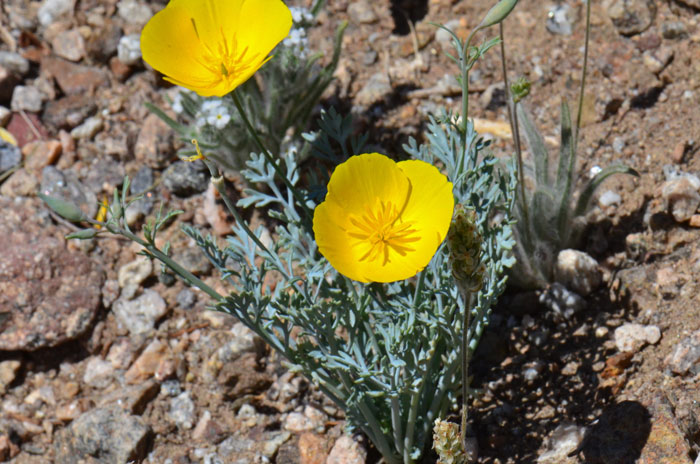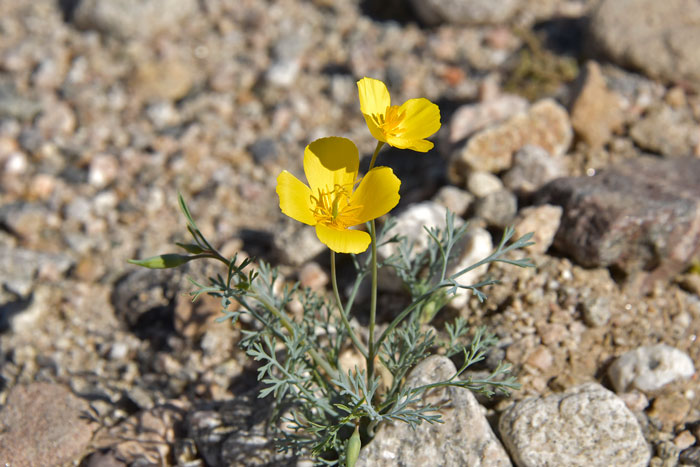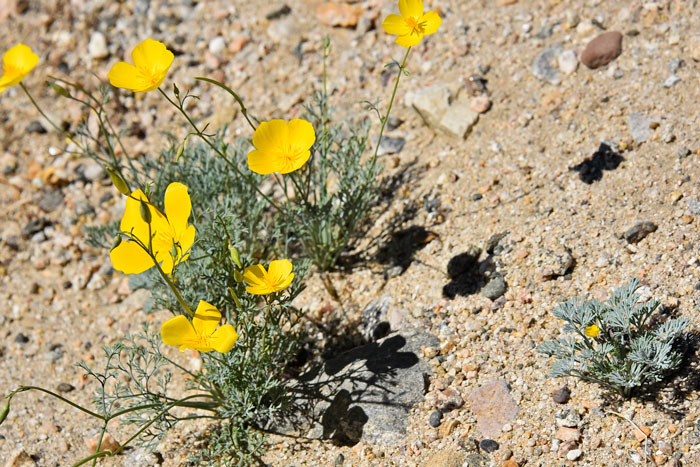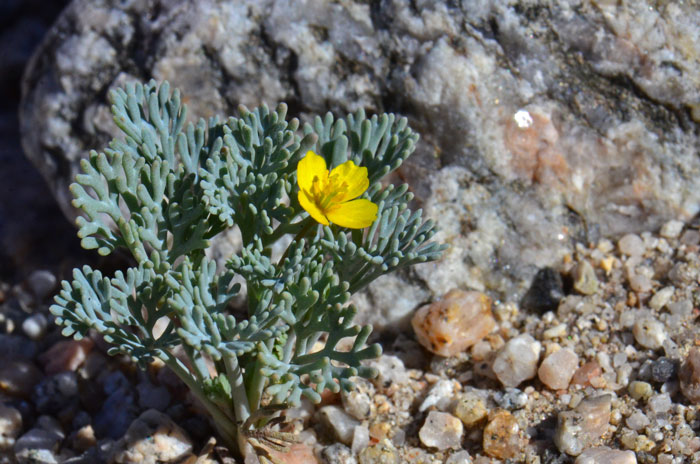Eschscholzia glyptosperma, Desert Poppy




Scientific Name: Eschscholzia glyptosperma - (esh-SHOLE-tzee-a)
Common Name: Desert Poppy
Also Called: Desert Goldenpoppy
Family: Papaveraceae or Poppy Family
Synonyms: ()
Status: Native
Duration: Annual
Size: Up to 10 inches or so.
Growth Form: Forb/herb; erect, acaulescent or nearly so, glabrous.
Leaves: Blue green, glaucous, numerous leaf segments, basal leaves.
Flower Color: Yellow; buds often nodding, glabrous, glaucous; petals small about 1⁄3 inch, fruit a capsule, seeds tan to brown.
Flowering Season: February to May, March to May in CA and TX.
Elevation: Up to 2,000 feet.
Habitat Preferences: Desert washes, flats, slopes and sandy soils.
Recorded Range: Desert Poppy is found in the southwestern United States in AZ, CA, NV, UT. In Arizona it occurs in the central and western parts of the state.
North America & US County Distribution Map for Eschscholzia glyptosperma.
U.S. Weed Information: No information available.
Invasive/Noxious Weed Information: No information available.
Wetland Indicator: No information available.
Threatened/Endangered Information: No information available.
The Plant List includes 12 accepted species names for the genus Eschscholzia.
Comments: The photos above were take at Death Valley National Park and Anza Borrego Springs, California (winter-spring 2016).
Desert Poppy is very similar to the popular California Poppy but much smaller and with several other technical differences.
In Southwest Desert Flora also see; California Poppy, Eschscholzia californica and Pygmy Poppy, Eschscholzia minutiflora.

